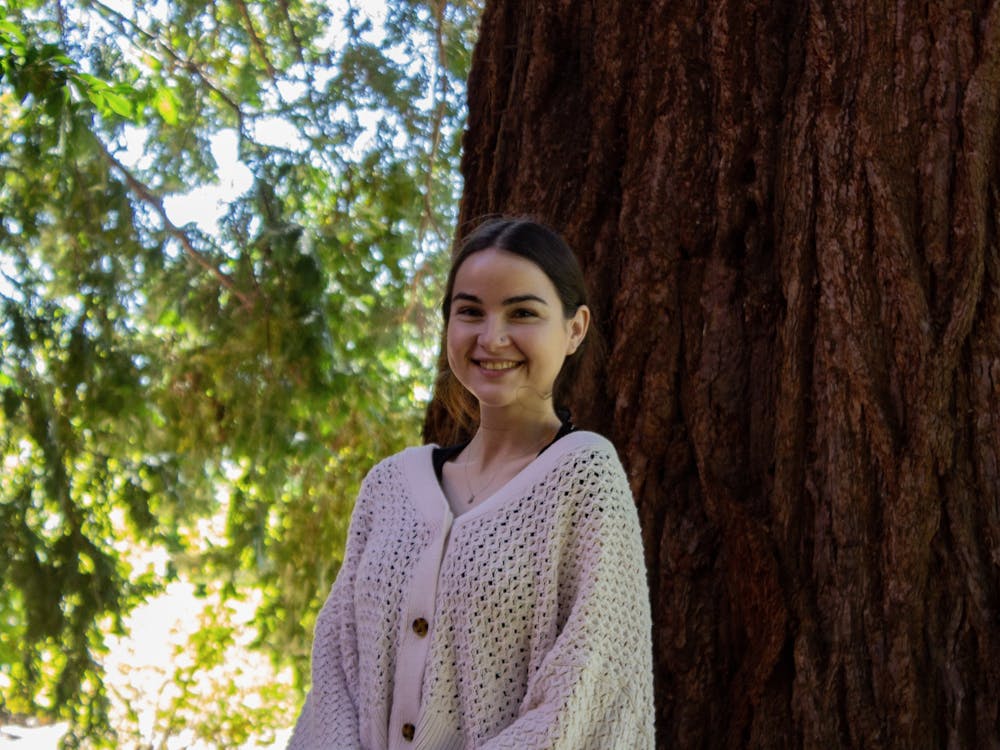With each step, I move further away from the stressors of the outside world. The buzz of the afternoon traffic fades into background noise and then further dissipates into the void, into nothingness.
This silence is only momentary. As my ears adjust to the stillness of the woods, new noises subtly fade into my consciousness.
I focus on the steady rhythm of a pileated woodpecker boring holes into a hemlock, seeking an afternoon snack of carpenter ants. The resonating thuds act as a metronome keeping the beat for the chattering of the squirrels and the swaying of the fir boughs above — a soft opening to the delicately intricate symphony of the natural world.
Every moment experienced in the forest is laced with serenity and peace, but there is more to these moments than what initially meets the eye.
Upon entering the woods, one of the first things you will notice is an extreme increase in air quality. The scent of hummus and moist soil, rich in nutrients, mingles with the crispness of fir. It flirts with the vanilla and cinnamony richness of the bark of nearby ponderosa pine baked in the sun.
But with every inhale, you are breathing in more than freshly produced oxygen. Your olfactory senses are interacting with phytoncides, which are antimicrobial allelochemical volatile organic compounds, aka essential oils released by trees.
Plants release phytoncides to shield themselves from disease, bacteria and bugs, but receptors in our bodies also interact with these compounds. We are just starting to understand the health benefits of inhaling these airborne particles, but from findings so far, you’re going to want to take a few deeper gulps of air the next time you are out in mother natch.
Studies have found phytoncides to increase NK cells, natural killer cells, which are critical to immune health and are also our body's first line of defense against targeting and destroying cancer cells.
Time spent in forests equates to heightened cognitive function, a decrease in stress levels and hypertension and positive impacts on blood glucose levels in diabetic patients. Breathing in the air within forests alone will provide you with more health benefits than some forms of western medicine … Are you a tree hugger yet?
If the physical benefits of spending time in forests are not enough to convince you to walk outside right now and embrace the nearest maple, how about the mental and spiritual aspects? Time spent outside equates to heightened levels of creativity and calmness, maximizing the amount of zen in your life.
Mental health professionals are beginning to utilize these benefits through the expanding field of forest therapy. It has been proven that as little as 120 minutes of time spent outside a week equates to heightened health and overall well-being. That breaks down to around 20 minutes a day, a doable amount, even in the most demanding of schedules.
Human beings are as much a part of the natural world as honeybees or streams of glacial runoff or alpine meadows of castilleja. Yet the average human spends upwards of 87% of their life indoors, and 6% more in an enclosed vehicle, removed from the very system from which we originate. This has severely affected how we interact with the environment as well as how we treat each other.
We are part of an infinitely complex and interconnected environmental community, and by spending more time outdoors we can both better ourselves and our planet. We are more likely to protect something that we know and love, so through spending more time in nature, collective action toward conservation efforts is bound to increase.
Our forests are quite literally the earth’s lungs. Filtering toxins from our air and sequestering carbon from our atmosphere, trees regulate atmospheric and hydrological health.
The parallels between the human body and trees do not just stop at the lungs. Dendron is the Greek word for tree, with the dendrites in our brain named so because of their similarities to the root structures of our photosynthesizing counterparts — we are made of the same molecules with organizational parallels.
In the heart of the forest, if you sit and listen and truly tune into your observational senses, you will begin to interpret different lessons from the surrounding trees.
On a physical level, there is a lot you can learn from a tree. So much so that there is an entire sector of climate science, dendrochronology, dedicated to this very task.
Dendrochronology utilizes the annual growth rings found in tree trunks to identify different aspects of past climate. Tree ring size correlates directly to precipitation levels and air temperature, with wide rings indicative of years of prosperous growth and favorable weather conditions and thin rings containing memories of drought or of a harsh winter freeze.
This serves as a reminder that we can only grow as much as our surroundings allow. We are a cumulation of what we draw from our environment. From the literature we consume, to the people we build relationships with, to the food we put into our bodies, who we are in a moment of time reflects the environment we exist within, chosen or not.
While we do not have tree rings to point at and measure, we are in perpetual states of growth, with feelings of community as precipitation and unconditional support as temperature.
Moving past the physicality of knowledge trapped in the growth rings of wood, other lessons can be discerned by observing the forest around you. Trees are incredible teachers, with lessons on how to act with reciprocity and generosity and how to live a life with gratitude, woven in the roots beneath your feet and the canopies sheltering your head.
The roots of a tree are the very foundation, the beginning, of the bounding life that is to come.
When a seed first falls to the forest floor, the first thing to emerge from it is the primary root or radicle. Immediately the seed is tethered to the ground, and water and nutrients are subsequently absorbed from the soil.
As the tree continues to grow, in all directions, roots cannot help but intermingle and connect. When this happens, trees begin to exchange nutrients and information with each other.
Communication is intensified through the aid of the mycelial network, threads of fungi that connect to roots, that exchange phosphorus acquired from the soil for carbs and sugars from the tree. These are compounds that the mycelial network is unable to produce itself (And this is your cue to go read the “Hidden Life of Trees” by Peter Wohlleben, maybe while laying in a bed of moss under your favorite redwood on campus. Or something along those lines).
Whether it be communicating through fungal networks or exchanging information through intertwined roots, trees are experts at asking for help … Our leafy friends are better communicators than some people.
These symbiotic and mutually beneficial relationships contribute to overall forest health. For every take, there is a give — no favor left unpaid. And life flourishes because of it.
When we care for each other, whether it be through verbal affirmations, time or energy, we increase our capacity to grow as a collective.
Forests heal and provide. They mend the physical and spiritual pains we experience as human beings, incite curiosity and teach us about the interconnected nature of the world outside of our rituals of home, car, work, repeat.
Filtering our air and our water, housing countless species of flora and fauna and safeguarding the wisdom of our earth, forests are both caretakers and historians.
So go hug a tree, or maybe two, and advocate for these life forms that provide us with so much.
Ellie Black is a reporter for The Beacon. She can be reached at blacke24@up.edu.
Have something to say about this? We’re dedicated to publishing a wide variety of viewpoints, and we’d like to hear from you. Voice your opinion in The Beacon.








